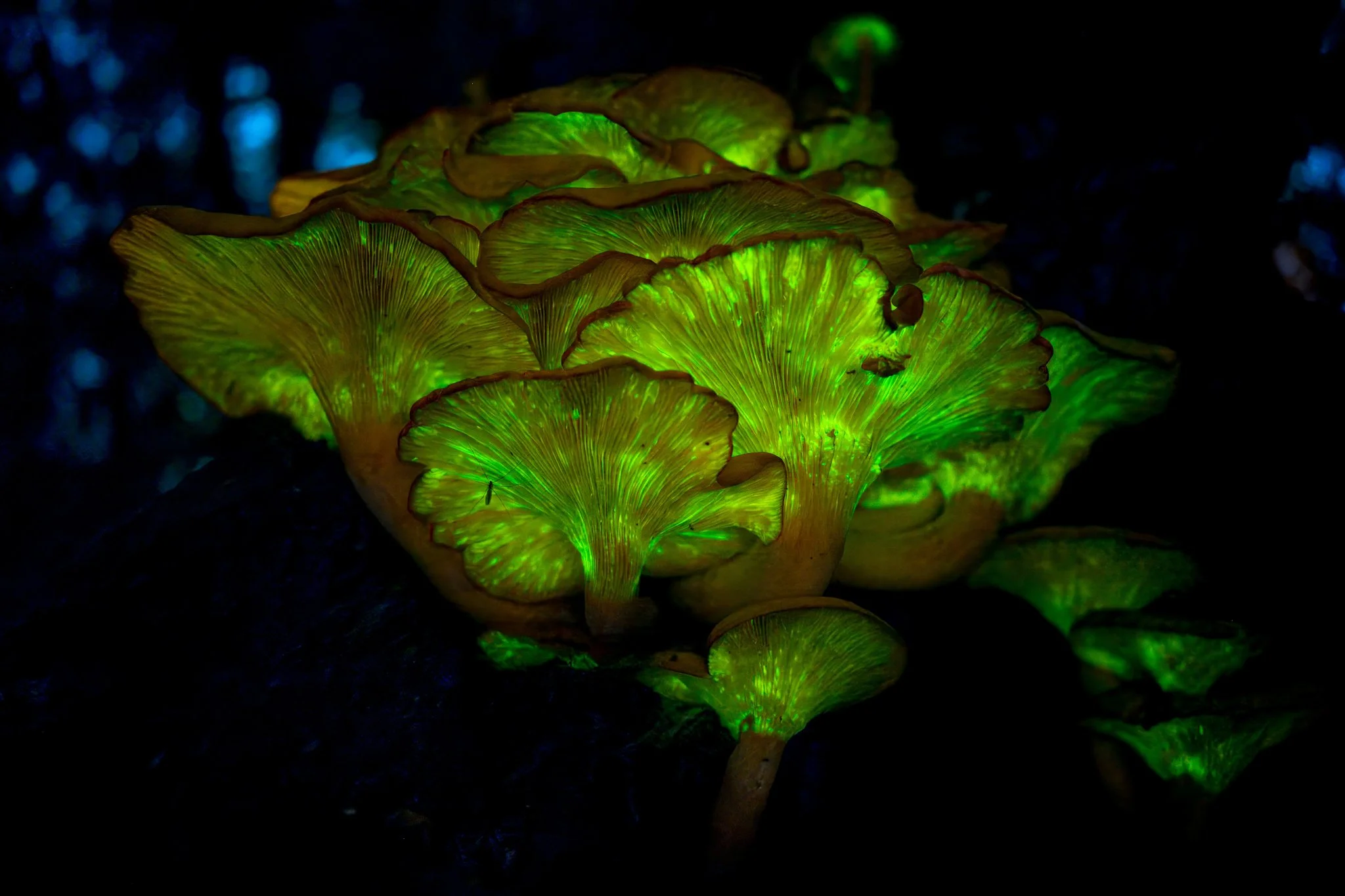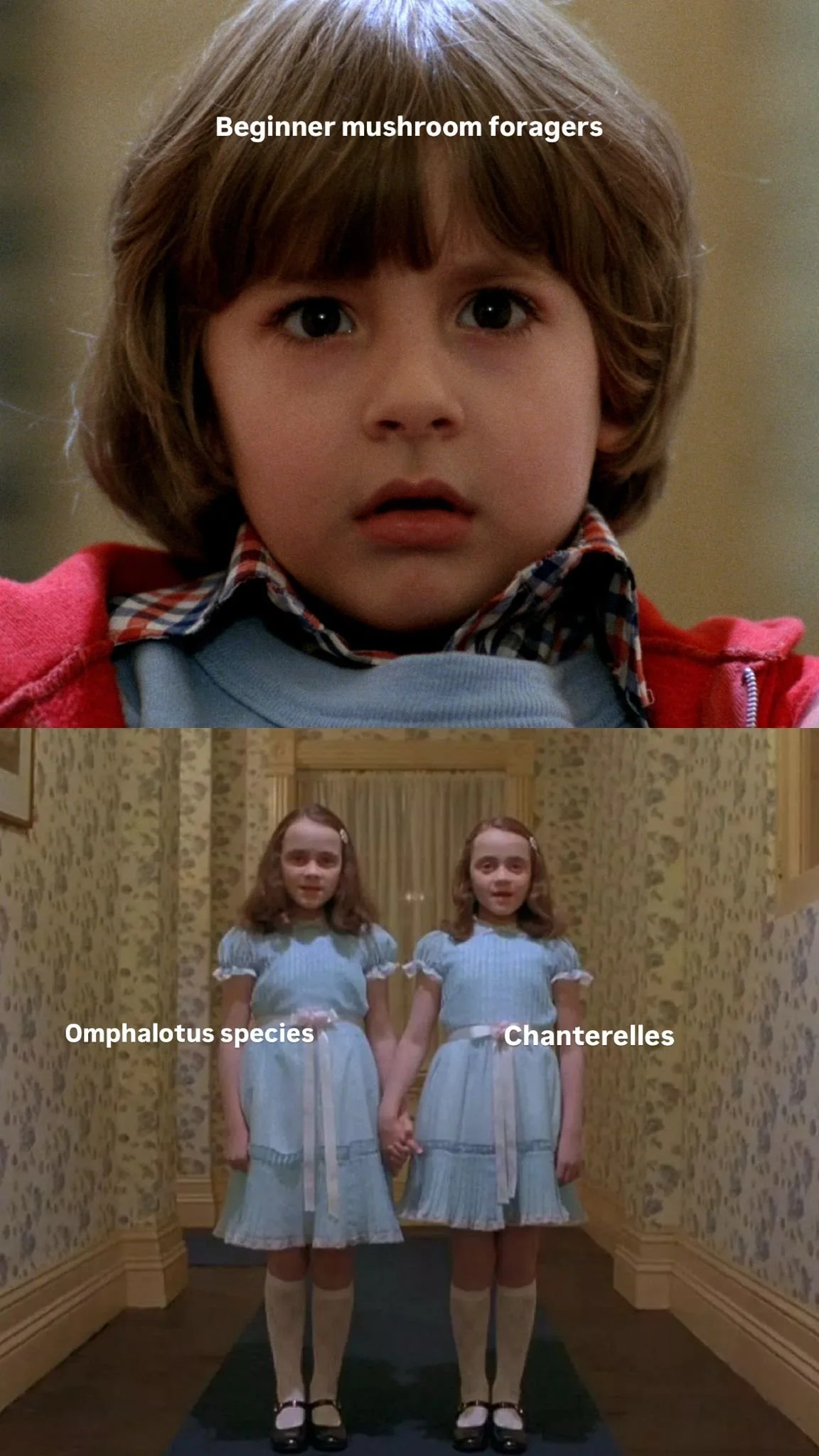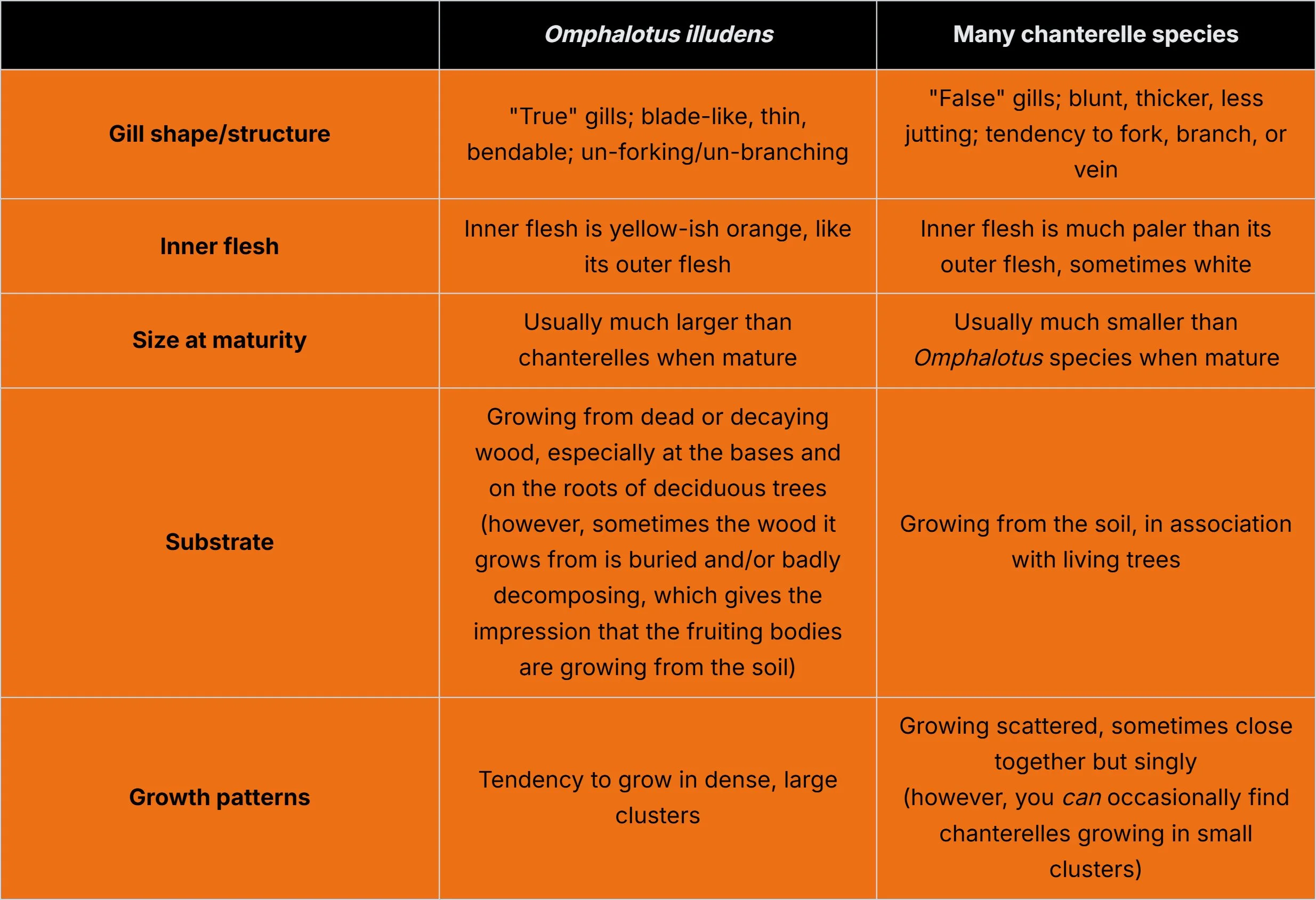Featured Fungus: Omphalotus illudens
by Loulwa Soweid
Dead man’s fingers, bleeding tooth, zombifying Cordyceps; there is no shortage of frightful fungi that are perfect to spotlight during the spooky season! The terrifying toadstool we will delve into today bears a common name, color, and propensity to luminesce reminiscent of the carved pumpkins lining our doorsteps on Halloween. Read on to learn more about the eastern Jack O’Lantern mushroom, Omphalotus illudens![1,2]
Photo by iNaturalist user magicalthinker (aka me)
Eye-catchingly orange with decurrent gills and ringless stipes, one can find O. illudens growing in clusters from decaying wood (including stumps, logs, buried wood or roots, or at the base of dead/dying hardwoods) anytime from summer to autumn. Bright and beautiful in the day, they can be equally entrancing by nightfall, when you may catch their gills emitting a very faint, greenish glow thanks to a chemical reaction in which the enzyme luciferase (also responsible for putting the “lightning” in lightning bugs) oxidizes the light-producing organic molecule luciferin[3]. However, this dim gleam (also referred to as “foxfire”[4]) can be difficult to make out until your eyes acclimate to the darkness, and you may still need to pull out your camera for a long exposure shot to capture it. Whether you see it can also depend on the freshness or maturity of the specimens you find, and possibly on environmental conditions.
Photo by iNaturalist user magicalthinker (aka me again)
Photo by iNaturalist user tommy-woodcock
While bioluminescence is one of its claims to fame, O. illudens is also known for bearing a resemblance to the delectable chanterelle, with both mushrooms sporting a similar outer flesh color, spore print color, gill attachment, and some overlap in growing seasons. However, be warned: O. illudens is tricking you into thinking it’s a treat, and you should keep it far, far away from your mouth. Omphalotus species contain toxins known as illudins[5] (specifically illudins M and S) that cannot be destroyed by cooking, and while consuming them won’t directly kill a healthy adult, it will cause intense gastrointestinal distress that can easily lead to hospitalization.
Meme by me!
Now, if you’re a newer mushroom forager , it makes complete sense to feel like you’re frantically trying to distinguish between those creepy twins in The Shining when comparing O. illudens to several chanterelle species. However, there are also key differences to take note of, some of which I have highlighted in below[6] (and which this wonderfully informative video by Learn Your Land goes over).
Or of course, you can always forgo the fungi and simply stick to filling your buckets with sweets as you go door to door this All Hallows’ Eve!
Footnotes:
[1] I should clarify that there are several North American species in the Omphalotus genus that are all referred to as “Jack O’Lantern” mushrooms, including the southern Jack O’Lantern mushroom (O. subilludens) and the western Jack O’Lantern mushroom (O. olivascens).
[2] Note that many mushroom guides and informative sources from and before the early 2000s will refer to O. illudens as O. olearius; however, we now know that O. olearius is a species that only occurs in Europe, and that O. illudens is its own unique North American species.
[3] While these names have nothing to do with the devilish or demonic – both are derived from the Latin words “luc” meaning light and “fer” meaning “to bear/to produce” – I must admit they fit the Halloween theme well!
[4] O. illudens isn’t alone in this ability; over a hundred species of fungi exhibit bioluminescence, and this article mentions some fascinating theories about how it may be linked to insect-mushroom interactions. Or perhaps it may simply be to captivate any mischievous trick-or-treaters that wander into the woods in search of treats?
[5] I found conflicting information on whether Omphalotus species also contain the toxin muscarine. While some studies noted that they indeed did, and while it seems like the symptoms developed after consuming Omphalotus match many of the symptoms associated with muscarine poisoning, other studies delving into Omphalotus toxins only mention the presence illudins without highlighting muscarine at all.
[6] I also found conflicting evidence on whether Omphalotus species smelled pleasant or not; some sources suggested that the presence of a fruity or flowery odor was one of the similarities between Omphalotus species and chanterelles, while others noted that aroma was actually one of the key differences between them (in that chanterelles tended to be fragrant whereas Omphalotus lacked any remarkable scent other than that of your everyday mushroom). To chime in as someone who has taken a whiff of the O. illudens speciments that I have found, the latter is what I personally experienced.





